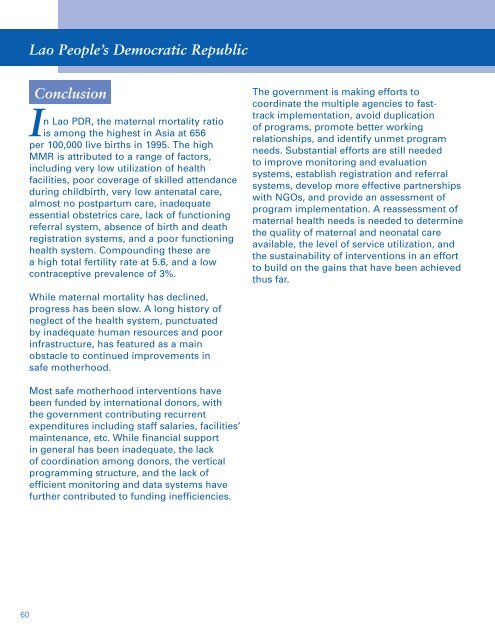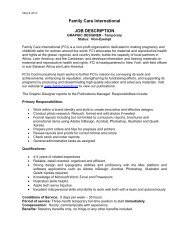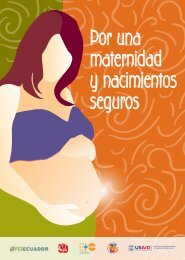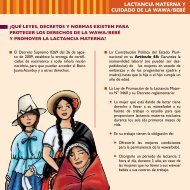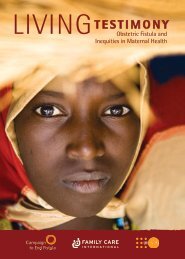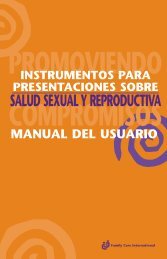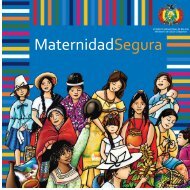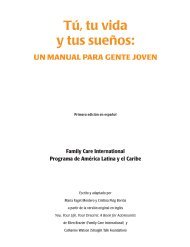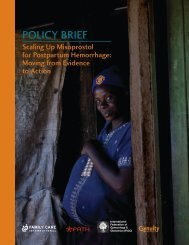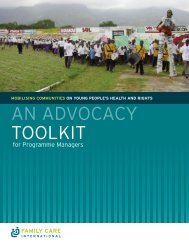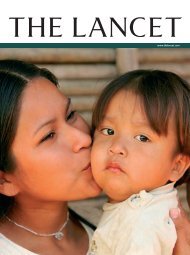Safe Motherhood: A Review - Family Care International
Safe Motherhood: A Review - Family Care International
Safe Motherhood: A Review - Family Care International
Create successful ePaper yourself
Turn your PDF publications into a flip-book with our unique Google optimized e-Paper software.
0<br />
Lao People’s Democratic Republic<br />
Conclusion<br />
In Lao PDR, the maternal mortality ratio<br />
is among the highest in Asia at 656<br />
per 100,000 live births in 1995. The high<br />
MMR is attributed to a range of factors,<br />
including very low utilization of health<br />
facilities, poor coverage of skilled attendance<br />
during childbirth, very low antenatal care,<br />
almost no postpartum care, inadequate<br />
essential obstetrics care, lack of functioning<br />
referral system, absence of birth and death<br />
registration systems, and a poor functioning<br />
health system. Compounding these are<br />
a high total fertility rate at 5.6, and a low<br />
contraceptive prevalence of 3%.<br />
While maternal mortality has declined,<br />
progress has been slow. A long history of<br />
neglect of the health system, punctuated<br />
by inadequate human resources and poor<br />
infrastructure, has featured as a main<br />
obstacle to continued improvements in<br />
safe motherhood.<br />
Most safe motherhood interventions have<br />
been funded by international donors, with<br />
the government contributing recurrent<br />
expenditures including staff salaries, facilities’<br />
maintenance, etc. While financial support<br />
in general has been inadequate, the lack<br />
of coordination among donors, the vertical<br />
programming structure, and the lack of<br />
efficient monitoring and data systems have<br />
further contributed to funding inefficiencies.<br />
The government is making efforts to<br />
coordinate the multiple agencies to fasttrack<br />
implementation, avoid duplication<br />
of programs, promote better working<br />
relationships, and identify unmet program<br />
needs. Substantial efforts are still needed<br />
to improve monitoring and evaluation<br />
systems, establish registration and referral<br />
systems, develop more effective partnerships<br />
with NGOs, and provide an assessment of<br />
program implementation. A reassessment of<br />
maternal health needs is needed to determine<br />
the quality of maternal and neonatal care<br />
available, the level of service utilization, and<br />
the sustainability of interventions in an effort<br />
to build on the gains that have been achieved<br />
thus far.


